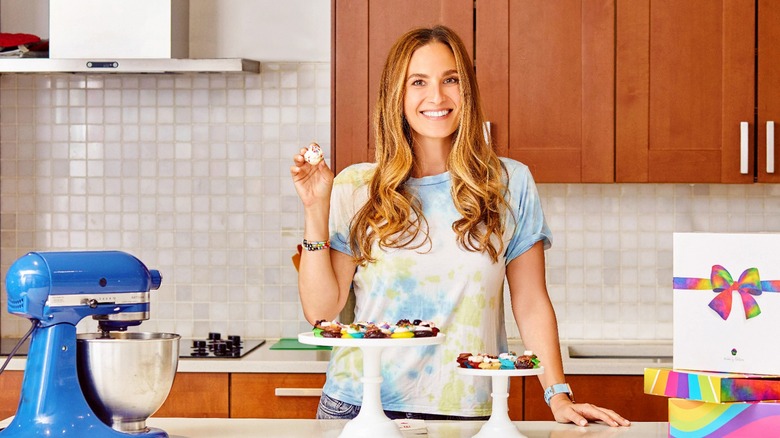You're Missing Out If You're Not Using This Food Coloring For Cupcakes
When it comes to cupcakes, visual appeal is just as important as flavor. Whether you're making these delightful baked goods for a party or just as a festive snack to enjoy on your own, food coloring can transform your cupcakes into vibrantly colorful creations. But which food coloring is best when baking a batch of pink champagne cupcakes? To answer this question, Daily Meal turned to Melissa Ben-Ishay, owner of Baked by Melissa. (While baking is her true forte, Ben-Ishay can also be found hosting Dan's Grill Hampton: A Taste of the Hamptons — The Ultimate BBQ Event in East Hampton, New York, on August 3, 2024.)
When it comes to baking, Ben-Ishay has a distinct preference when creating her cupcake masterpieces. According to the esteemed baker, "I like food gel because it elicits the brightest colors." Consisting of water, synthetic coloring agents, and a thickener like glycerin or corn syrup, gel dyes have a more robust consistency than liquid food coloring. And as Ben-Ishay indicates, this composition results in a much brighter, bolder color. As a result, gel dyes allow you to transform something like a traditional American buttercream frosting recipe into something eye-catchingly beautiful.
How to color cupcakes naturally
As widely reported, certain types of artificial food dyes are linked to some potential health concerns, including major illnesses like cancer. However, it should be noted that food dyes are considered safe for consumption and are regulated by the FDA. Still, some people might prefer a natural alternative when experimenting with something like their most tried-and-true best cupcake recipe, and Melissa Ben-Ishay has a recommendation for a natural alternative to gel dyes.
As explained by the baker, dyes made of freeze-dried fruit turned into powder is ideal when seeking something more natural to change the color of your baked goods. Lots of foods can be used to create colorful dye for cupcakes, including raspberries, blueberries, carrots, and beets. One potential drawback is that these foods not only color baked goods, but they also add flavor. Additionally, the end result won't be quite as vibrant as if you were using gel dyes. You may also consider using plant-based gel dyes, which feature natural ingredients but lack added flavor. The natural gel dyes can also have a more vibrant color, which will allow you to create cupcakes as bright as the signature Electric Tie-Dye Cupcake at Baked By Melissa.

